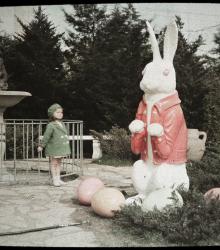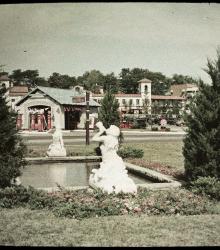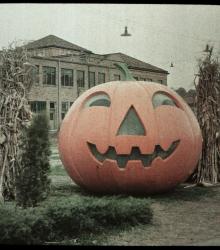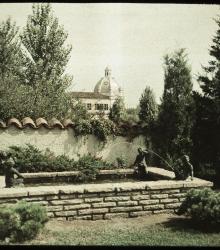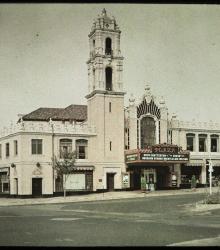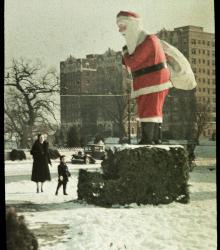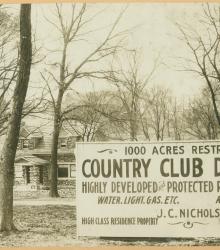An autochrome photograph of a small child standing next to a statue of the Easter Bunny. This statue and accompanying eggs were part of the Country Club Plaza's Easter decorations.
Plaza
An autochrome photograph of a fountain in the Country Club Plaza just east of the intersection of Alameda Road (now Nichols Road) and Broadway. This vantage point faces north-northeast towards a gasoline filling station, a parking lot, and the Country Club Plaza Balcony Building in the background.
An autochrome photograph of a large decorative Halloween pumpkin in the Country Club Plaza on Alameda Road at Central Street.
An autochrome photograph of a fountain in the Country Club Plaza on Broadway between 47th Street and Alameda Road (now Nichols Road). This vantage point faces east towards the dome at the northeast corner of Central Street and Alameda.
An autochrome photograph of the Country Club Plaza Theater, taken from the east.
An autochrome photograph of a Santa Claus Chirstmas decoration at the corner of Alameda Road (now Nichols Road) and Central Street in the Country Club Plaza.
Kansas City, like other American cities, added new suburban-style developments at its edges during the early decades of the 20th century. What makes it a unique case for understanding this shift is the character of Jesse Clyde (J.C.) Nichols. Born in Olathe, Kansas, in 1880, Nichols had a career that spanned the first half of the 20th century, and included transforming thousands of acres of land into a planned suburban community.
